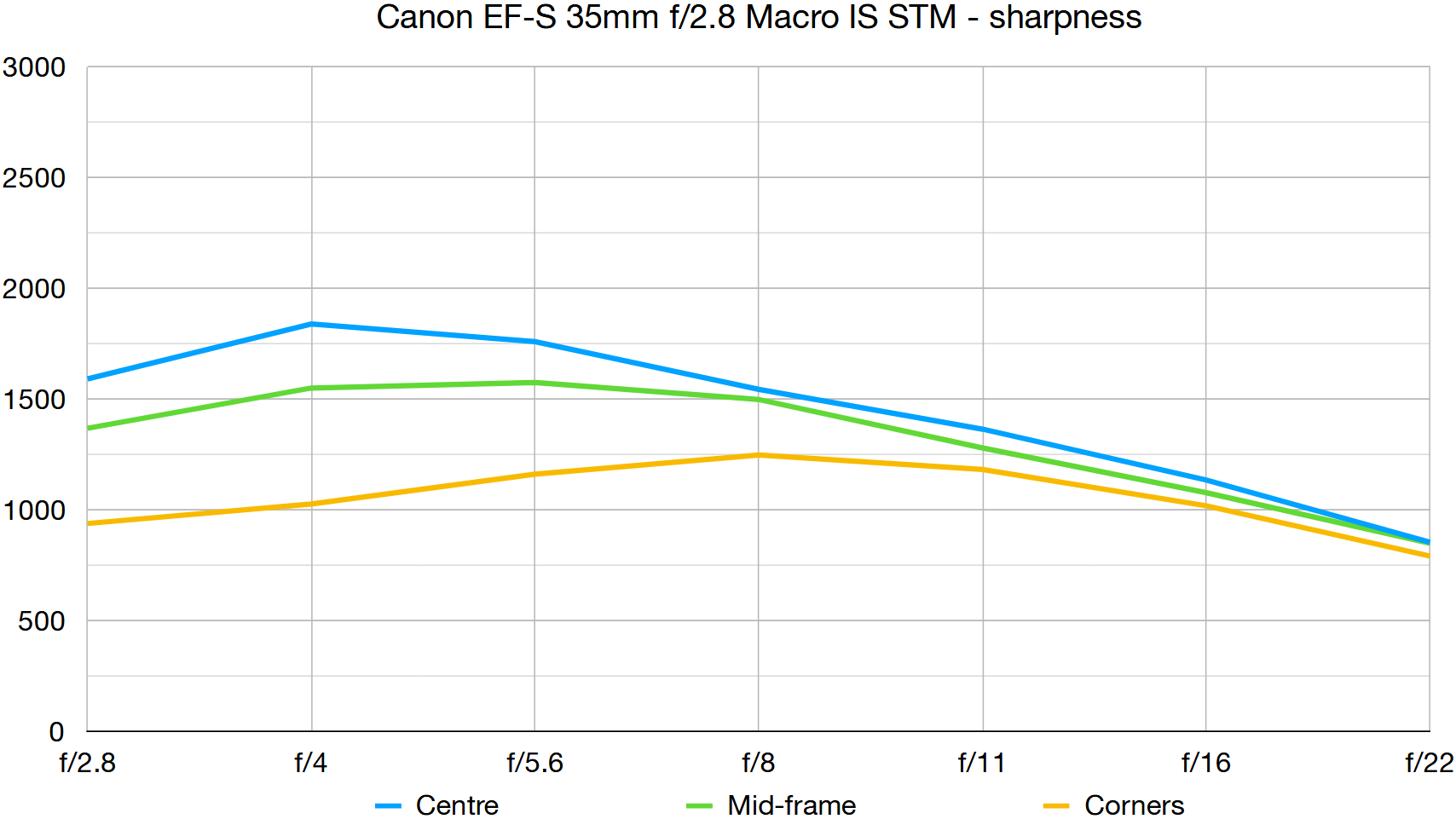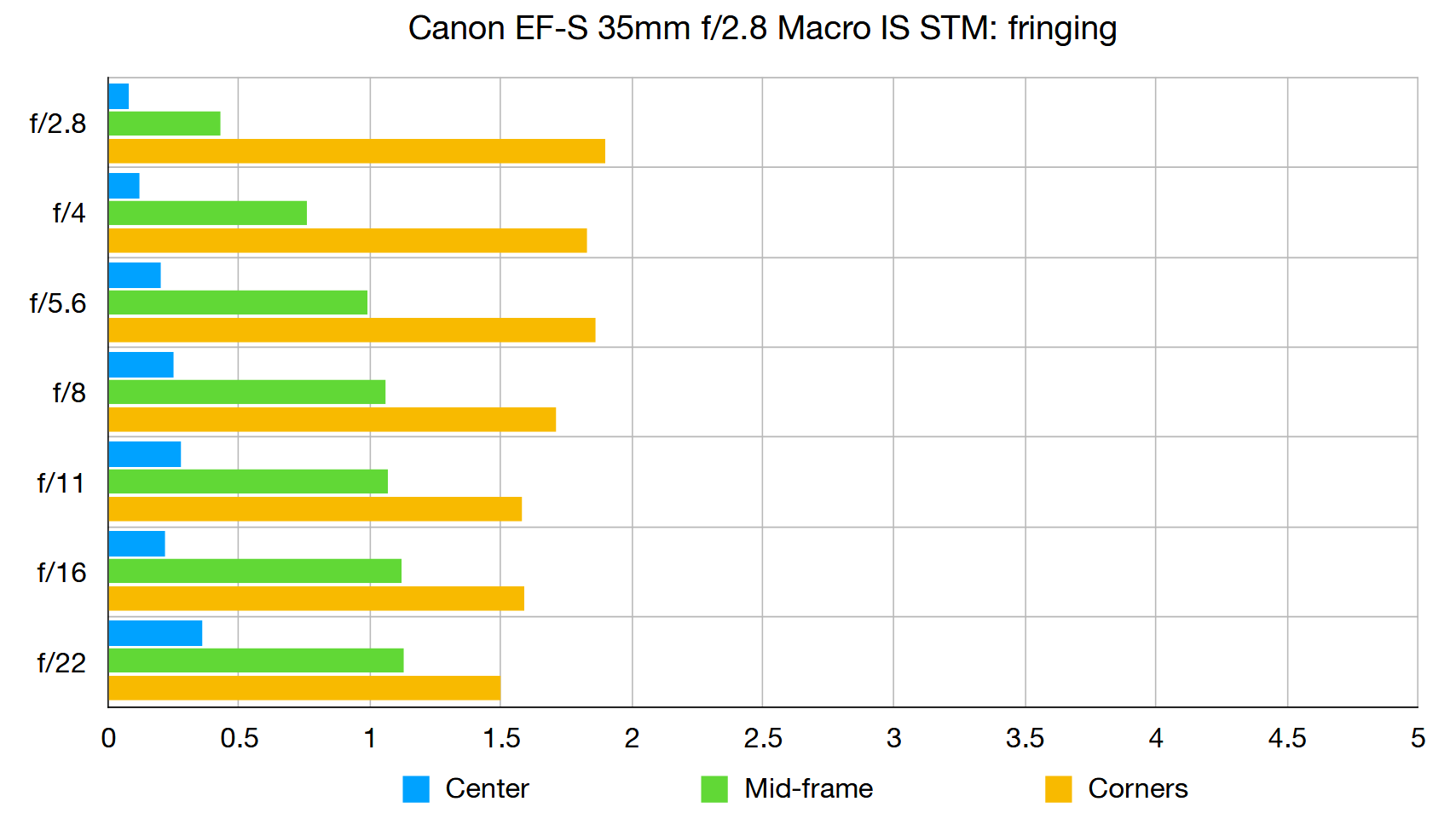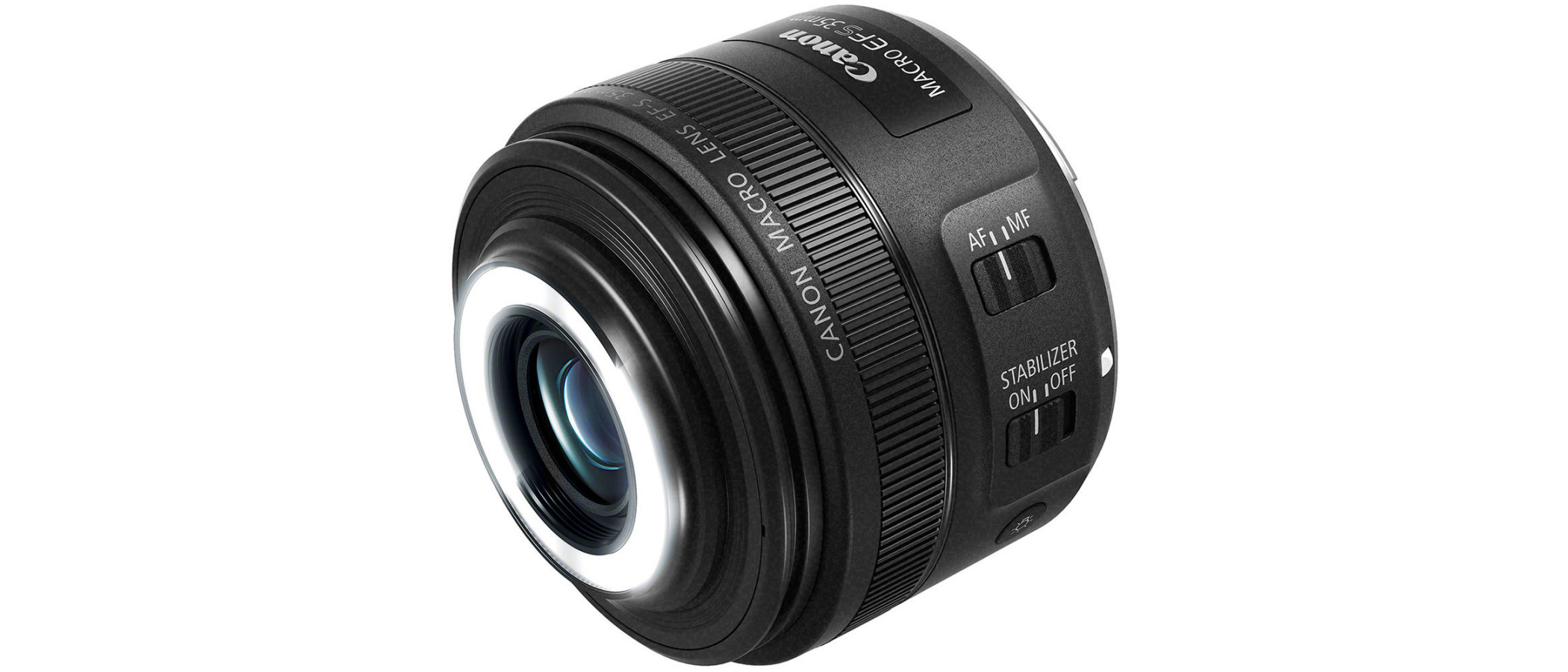Digital Camera World Verdict
Canon’s original EF-S 60mm Macro lens for APS-C format SLRs was discontinued a while ago, making the newer 35mm the last EF-S Macro lens standing. As a sign of the mirrorless times, this one is also being phased out but there’s still some stock around if you look hard enough, and it makes a good second-hand buy. With an effective focal length of 56mm in full-frame terms, and a usefully wide aperture rating of f/2.8, it also works well as a ‘standard’ prime for general shooting.
Pros
- +
Hybrid image stabilizer
- +
Built-in LED light
- +
Compact and lightweight
Cons
- -
Not weather-sealed
- -
No lens hood supplied
- -
Mediocre narrow-aperture sharpness
Why you can trust Digital Camera World
With an effective focal length of 56mm, the Canon EF-S 35mm f/2.8 Macro IS STM is arguably a little short for macro photography but fits well with Canon’s APS-C format DSLRs, for which it’s designed. Extreme close-up shooting benefits from hybrid image stabilization and a built-in LED Macro Lite, which is useful for both stills and video capture.
Specifications
Mount: Canon EF-S
Full-frame: No
Autofocus: Yes
Stabilization: Yes
Lens construction: 10 elements in 6 groups
Angle of view: 42.5 degrees
Diaphragm blades: 7
Minimum aperture: f/32
Minimum focusing distance: 0.13m
Maximum magnification ratio: 1.0x
Filter size: 49mm
Dimensions: 69x56mm
Weight: 190g
Key features
Conveniently compact and lightweight, this lens features a fast and ultra-quiet stepping motor autofocus system and a hybrid image stabilizer. Stabilization remains more effective than usual for close-up shooting, its hybrid nature correcting for x-y shift as well as for the more typical angular vibration. The optical path features one glass-moulded aspherical element, intending to boost sharpness and clarity while reducing spherical aberrations.
Another neat feature is the LED Macro Lite built into the front end. This forms a circle around the front element and can be switched to illuminate on one side or the other, or both sides simultaneously. Different power outputs are also available but, as we’ll come to later, you’re likely to make use of the maximum power available.
At the shortest focus setting, the working distance between the front of the lens and the subject is a little close for comfort, at 0.3m or around 5 inches. Even so, it gives you more breathing space than the similar Canon EF-M 28mm f/3.5 Macro IS STM, which is designed for EOS M system mirrorless cameras.
Performance
Based on a lead-screw type stepping motor system, autofocus is speedy and the electronically coupled manual focus ring enables precise adjustments in macro shooting.
Levels of sharpness are mostly good but a little lackluster in the aperture range of f/16 to f/32, which is a bit of a disappointment for macro shooting, where you often need to use a narrow aperture for gaining even a small amount of depth of field. Color fringing can be a little noticeable and there’s more barrel distortion than you might expect from a macro lens. As usual, the hybrid stabilizer works well for general and close-ups but is of relatively little benefit for full macro shots.
In our tests, we had to use a slow shutter speed of 1/8th of a second at f/8 (ISO 200) when relying solely on the LED lamp at its brightest setting.
Lab results
We run a range of lab tests under controlled conditions, using the Imatest Master testing suite. Photos of test charts are taken across the range of apertures and zooms (where available), then analyzed for sharpness, distortion and chromatic aberrations.
We use Imatest SFR (spatial frequency response) charts and analysis software to plot lens resolution at the center of the image frame, corners and mid-point distances, across the range of aperture settings and, with zoom lenses, at four different focal lengths. The tests also measure distortion and color fringing (chromatic aberration).
Sharpness:

Levels of sharpness are pretty convincing at most aperture settings. Corner-sharpness drops off a bit at the widest aperture of f/2.8 but a more significant downside is that center/mid-sharpness is a little disappointing at very narrow apertures, often favored for macro shooting.
Fringing:

Lateral chromatic aberration can be noticeable towards the edges and corners of the image frame but in-camera correction is available with all current and recent APS-C format Canon EOS DSLRs, for which the lens is designed.
Distortion: -1.5
Barrel distortion isn’t severe but is worse than usual for a macro lens. As with lateral chromatic aberration, in-camera correction is available.
Verdict
Canon’s original EF-S 60mm Macro lens for APS-C format SLRs was discontinued a while ago, making the newer 35mm the last EF-S Macro lens standing. As a sign of the mirrorless times, this one is also being phased out but there’s still some stock around if you look hard enough, and it makes a good second-hand buy. With an effective focal length of 56mm in full-frame terms, and a usefully wide aperture rating of f/2.8, it also works well as a ‘standard’ prime for general shooting.
Read more:
• Best camera lenses to get
• Best Canon lenses
• Best Nikon lenses
• Best Sony lenses
Matthew Richards is a photographer and journalist who has spent years using and reviewing all manner of photo gear. He is Digital Camera World's principal lens reviewer – and has tested more primes and zooms than most people have had hot dinners!
His expertise with equipment doesn’t end there, though. He is also an encyclopedia when it comes to all manner of cameras, camera holsters and bags, flashguns, tripods and heads, printers, papers and inks, and just about anything imaging-related.
In an earlier life he was a broadcast engineer at the BBC, as well as a former editor of PC Guide.


